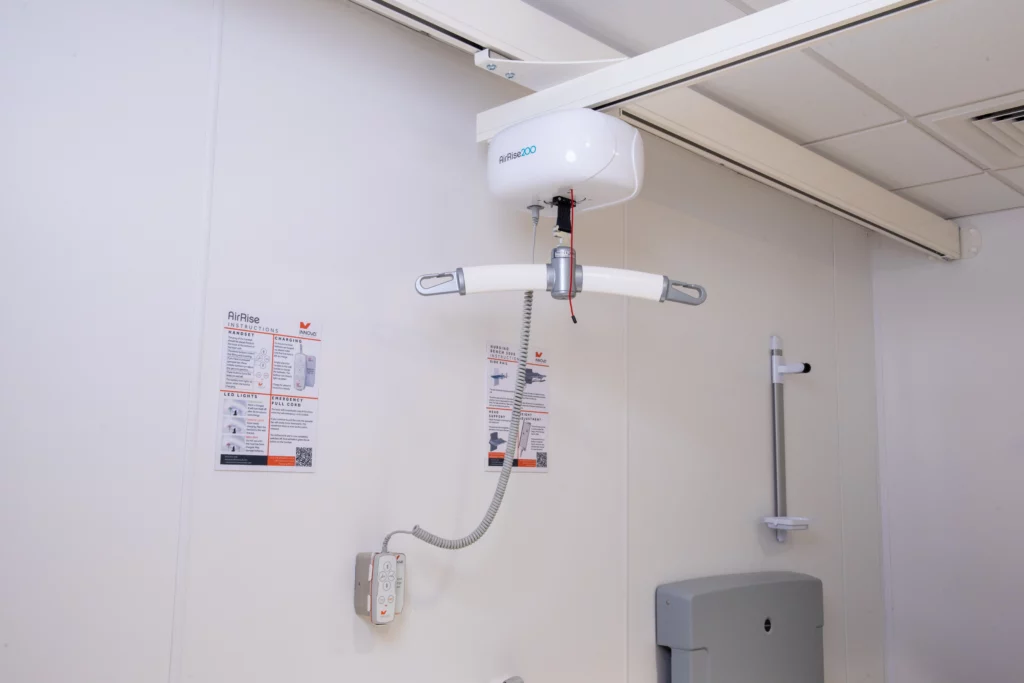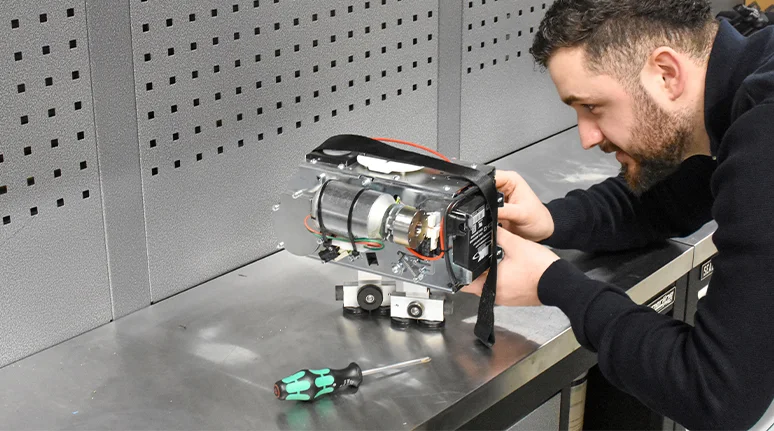What is a LOLER inspection?
Posted on 2 May 2024 Written By Michael Wood
For any employers and care environments who operate, own, or have control over patient lifting equipment, Lifting Operations and Lifting Equipment Regulations 1998 (LOLER) state that equipment must have a LOLER inspection for condition and safety once every 6 months.
This isn’t just applicable to mechanised equipment like the hoist itself. It also includes accessories like tracks, turntables, couplings and slings used in conjunction with the hoist.
In this blog, we’ll cover all the key details around LOLER inspections, including what the guidelines are, what they involve, how often they should be inspected and who should carry out testing.
Jump Straight To –
- Overview
- Which type of patient lifting equipment need LOLER testing?
- Why are LOLER tests needed?
- What do LOLER inspections consist of?
- How often are LOLER inspections needed?
- Record keeping

Innova provide full servicing and LOLER tests for our overhead hoisting systems.
Overview
Quite simply, the Lifting Operations and Lifting Equipment Regulations, otherwise known as LOLER or Lifting Equipment Inspection, is a detailed examination of lifting equipment that is carried out by a qualified or competent person, as defined by the Health and Safety Executive (HSE).
It is also sometimes referred to as an insurance inspection.
Under LOLER guidelines, all operations that relate to patient lifting equipment must be accurately planned by a competent person, supervised appropriately and carried out in a safe manner, helping to prevent the risk of injury.
These regulations also stipulate that all equipment involved with lifting should be fit for purpose, appropriate for the job and suitably marked, including maintenance records and any damages reported.
Just like an MOT for a car, it is illegal to operate hoisting equipment in a care environment without a current LOLER certificate. Regular checks must be carried out by a professional through a LOLER inspection to ensure that the equipment is safe for people to use and operate.
Which type of patient lifting equipment need LOLER testing?
To put it simply, LOLER inspections apply to care equipment that have a primary function of lifting.
We would advise that testing would include the following:
- Overhead hoists
- Mobile hoists
- Standing aids
- Slings
- Bath hoists and lifts
- Pool hoists
- Hoist weight scales

All patient hoisting equipment require regular checks and LOLER inspections.
Why are LOLER tests needed?
If you are responsible for the operation of a hoist that is ‘used at work’, you have a legal responsibility to make sure that they are maintained and safe to use.
The phrase ‘used at work’ in this context is defined as any location where work takes place, which includes paid and voluntary work, as well as essential care at home. In any instance where an individual enters a premises to operate patient lifting equipment, a LOLER inspection is required.
Not only do these assessments carry a legal requirement, they also play a crucial role in maintaining a safe environment for individuals and caregivers.
LOLER inspections should be viewed as a more in-depth check, carried out by an expert, to support the daily checks staff perform to keep a hoist in good condition.
Their aim is to minimise or even eliminate the potential for accidents and injuries that result from faulty lifting equipment.

LOLER tests help minimise risk of injuries to users and caregivers.
What do LOLER inspections consist of?
A LOLER checklist sets out the list of checks and tests that a qualified professional will carry out on your patient lifting equipment. For most hoisting equipment and accessories, the individual carrying out an assessment will check the following:
– Visual examination of hoist, accessories and functional checks
– Measurements of wear and tear
– Load testing to check hoist is meeting specification
– Some disassembly or internal examination may be required to assess damaged parts
How often are LOLER inspections needed?
In addition to the statutory six-monthly LOLER inspections, there are other instances to note where an assessment is needed.
With Innova’s servicing team, we’d support you in the following instances:
- On completion of installation and before first use, Innova will carry out LOLER testing to ensure your hoist installation is compliant, including a full condition report
- In the case of major repair works or a replacement hoist, we’d carry out a new LOLER inspection
- If you need to relocate and reinstall hoisting equipment, a new LOLER inspection certificate will be required

LOLER tests should be carried out every six months.
Record keeping
It is essential that you keep an up to date record of your LOLER inspections. As soon as your patient lifting equipment has been installed, the record-keeping process begins with an initial examination and installation report prior to its first use.
After this first inspection, any subsequent inspection records should be kept and made available for checking by Health and Safety Executive inspectors for a minimum of two years.
Any inspection or tests carried out by the competent person undertaking your LOLER inspection, must provide you with a written report. This will be your evidence and records of any defects that have been identified, and advisories on the actions requires to rectify those issues.
Summary
In this blog, we’ve covered what LOLER inspections are, what type of patient moving equipment need them, what an assessment covers and how often they are needed.
Innova’s experienced servicing team carry out LOLER testing across the UK, ensuring hoist systems in domestic properties, hospitals, hospices, SEN Schools and Changing Places are maintained to a high standard.
Help keep your hoisting equipment in great shape by getting in touch our service team using the contact form below.
Speak to The Experts
Need assistance with product enquiries, general inquiries, or product support? Our Phonelines are open 9am - 5pm Monday to Friday
0113 519 0319
Or, fill out the form for a call back.
